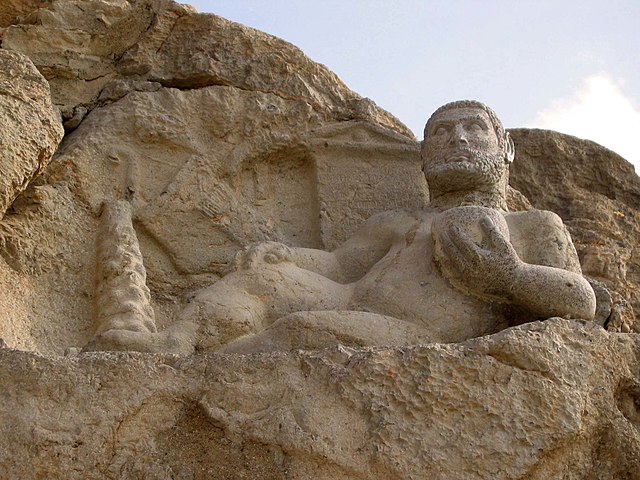Ganj Dareh is a Neolithic settlement in western Iran. It is located in the Harsin County in east of Kermanshah Province, in the central Zagros Mountains.
Area of the fertile crescent, circa 7500 BC, with main sites. Ganj Dareh is one of the important sites of the Pre-Pottery Neolithic period. The area of Mesopotamia proper was not yet settled by humans.
Principal Components Analysis of Ancient West Eurasians: Eigenvectors were inferred using present-day populations (gray points) and the ancient samples (colored shapes) were projected onto the plot. GD13a is part of the Neolithic Iranian (Iran_N) cluster.
Ganj Dareh site
Clay human figurine (Fertility goddess) Tepe Sarab, near Ganj Dareh, Kermanshah ca. 7000-6100 BCE, Neolithic period, National Museum of Iran
Kermanshah Province is one of the 31 provinces of Iran and one of the provinces which border Iraq. The province was known from 1969 to 1986 as Kermanshahan, and from 1986 to 1995 as Bakhtaran. The capital of the province is the city of Kermanshah. According to a 2014 segmentation by the Ministry of Interior, it is the center of Region 4, with the region's central secretariat located in Kermanshah. A majority of people in Kermanshah Province are Shia, and there are Sunni and Yarsani minority groups.
At the top panel Khosrow II is believed to be standing here in this relief at Taq-e Bostan. On his left is Ahura Mazda, on his right is Anahita, and below him is a mounted Persian knight.
Darius the Great's Behistun inscription
Hellenistic-era depiction of Bahram as Hercules.
Mirza Ahmad Khan Motazed-Dowleh Vaziri








